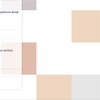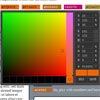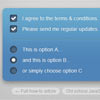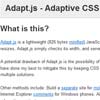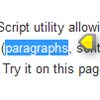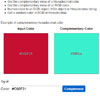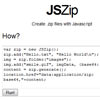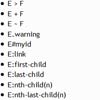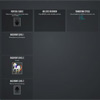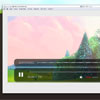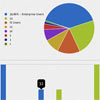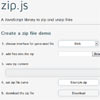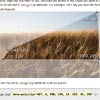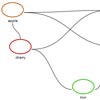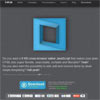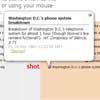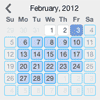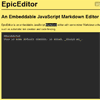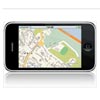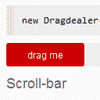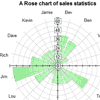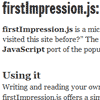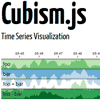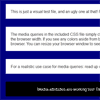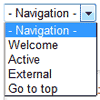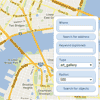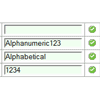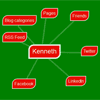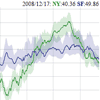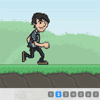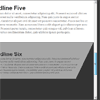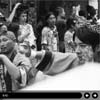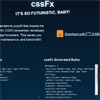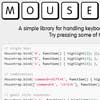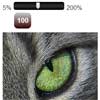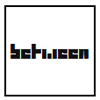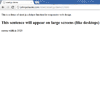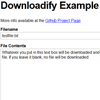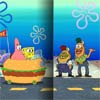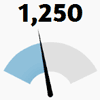Layzr.js
A modern lazy loading library for images.
Getting Started
Follow these steps:
- Examples progress like a coffee addiction: small -> medium -> large
Install
Layzr was developed with a modern JavaScript workflow in mind. To use it, it's recommended you have a build system in place that can transpile ES6, and bundle modules. For a minimal boilerplate that fulfills those requirements, check out outset.
Install Layzr, and add it to your package.json dependencies.
$ npm install layzr.js --save Then import it into the file where you'll use it.
import Layzr from 'layzr.js'Setup Images
Layzr intelligently chooses the best image source available based on an image's data attributes and browser feature detection.
- In browsers that support
srcset, if available, it will be used to determine the source. - In browsers that don't, the normal or retina source will be chosen based on the devicePixelRatio and availability.
Note that all attribute names are configurable via the options passed to Layzr. To indicate potential sources, add the following attributes to your images:
| Name | Required | Optional |
|---|---|---|
data-normal | ✓ | |
data-retina | ✓ | |
data-srcset | ✓ |
data-normal
Put the normal resolution source in the data-normal attribute.
<img data-normal="normal.jpg">Note that Layzr selects elements using this attribute. Elements without it won't be tracked, and will never load.
data-retina
Add the retina/high resolution source in the data-retina attribute.
<img data-normal="normal.jpg" data-retina="retina.jpg">data-srcset
Add the source set in the data-srcset attribute. For information on the proper syntax, read the official specification.
<img data-normal="normal.jpg" data-retina="retina.jpg" data-srcset="small.jpg 320w, medium.jpg 768w, large.jpg 1024w">Instantiate
Create an instance, optionally passing in your options.
Be sure to assign your Layzr instance to a variable. Using your instance, you can:
- start and stop the event listeners
- add and remove event handlers
- accommodate dynamically added elements
// using the default options const instance = Layzr() // using custom options const instance = Layzr({ // ... })Options are explained in the following section.
Options
Default options are shown below, and an explanation of each follows:
const instance = Layzr({ normal: 'data-normal', retina: 'data-retina', srcset: 'data-srcset', threshold: 0 })normal
Customize the attribute the normal resolution source is taken from.
const instance = Layzr({ normal: 'data-normal' })retina
Customize the attribute the retina/high resolution source is taken from.
const instance = Layzr({ retina: 'data-retina' })srcset
Customize the attribute the source set is taken from.
const instance = Layzr({ srcset: 'data-srcset' })threshold
Adjust when images load, relative to the viewport. Positive values make images load sooner, negative values make images load later.
Threshold is a percentage of the viewport height, identical to the CSS vh unit.
const instance = Layzr({ threshold: 0 })Events
Layzr instances are extended with Knot.js, a browser-based event emitter. Use the event emitter syntax to add and remove handlers. Review the emitter syntax here.
Layzr emits the following events:
src:before
This event is emitted immediately before an image source is set. The image node is passed to the event handler.
instance.on('src:before', (element) => { // 'this' is your Layzr instance // 'element' is the image node // ... })Load event handlers should be attached using this event. See the example, and note the caveats associated with image load events before proceeding.
src:after
This event is emitted immediately after an image source is set. The image node is passed to the event handler.
instance.on('src:after', (element) => { // 'this' is your Layzr instance // 'element' is the image node // ... })Note that the image is not necessarily done loading when this event fires.
API
All API methods are chainable, including those from the emitter.
.handlers(flag)
Add or remove the scroll and resize event handlers.
instance .handlers(true) // 'true' adds them .handlers(false) // 'false' removes them.check()
Manually check if elements are in the viewport.
This method is called while the window is scrolled or resized.
instance.check().update()
Update the elements Layzr is checking.
instance.update()Dynamically added elements should be handled using this method. See the example.
Browser Support
Layzr depends on the following browser APIs:
- classList
- ES5 array methods: forEach, slice
- requestAnimationFrame
It supports the following natively:
- Chrome 24+
- Firefox 23+
- Safari 6.1+
- Opera 15+
- Edge 12+
- IE 10+
- iOS Safari 7.1+
- Android Browser 4.4+
To support older browsers, consider including polyfills/shims for the APIs listed above. There are no plans to include any in the library, in the interest of file size.
Colophon
- Site Design: Chris Allen
- Stock Photos: Unsplash
License
MIT. © 2017 Michael Cavalea





